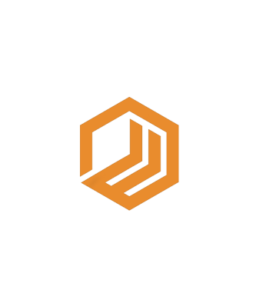Are you leveraging Facebook ads to enhance your marketing performance? In today’s digital marketing landscape, it’s impossible to overlook such a powerful tool for driving traffic and sales. If you’re not using Facebook ads yet, it’s likely just a matter of time before you do.

Assuming you are using them, what’s your average click-through rate (CTR)? I ask because the average CTR across all industries is reportedly 0.90%. While CTR can vary by industry, it tends to be relatively low overall. Just take a look at the latest data from WordStream:

Contents
What Are Facebook’s Custom Audiences?
If you’re acquainted with Facebook ads, you’re probably familiar with the concept of custom audiences. Creating a custom audience is an excellent way to refine your ad targeting and boost the effectiveness of your Facebook advertising campaigns.
Why use custom audiences? Because they allow you to connect with people who already have a relationship with your business. This includes existing customers and prospects who have interacted with your website or social media platforms.
You can build a custom audience using your own data sources such as page likes, email addresses, and phone numbers, enabling you to target your ads more precisely.
Ads created with custom audiences are also evaluated by Facebook’s Relevance Score.
This score assesses your ad’s potential, specifically whether you’re delivering the right message to the right audience. The best part? A higher relevance score typically leads to a better CTR and a lower CPC.
Facebook custom audiences allow you to target your prospects more precisely. This helps you re-engage those who have shown interest in your company, such as visitors who browsed your site but left without making a purchase.
This makes custom audiences an excellent retargeting tool since existing customers are more likely to make repeat purchases or upgrades.
Utilizing a custom audience maximizes your selling potential on the platform and allows you to see how much you can achieve with your current prospects.
On the other hand, Facebook Lookalike Audiences become valuable when you’re ready to expand and explore new markets.
What Are Facebook’s Lookalike Audiences?
A lookalike audience is a true game-changer in ad targeting, offering an advantage over custom audiences.
Why? While custom audiences are built from your existing prospects, lookalike audiences allow you to reach entirely new people who may have never heard of your business before but closely resemble your buyer personas and current customers.
This similarity makes lookalike audiences highly likely to convert into customers. With a lookalike audience, you can continuously explore new customer segments, which means your client base—and your opportunities for growth—are constantly expanding. This creates endless possibilities for progress and improvement.
You can create a lookalike audience based on :
- Your customer data
- Your custom audiences
- Page likes
- Facebook users who watched your video
- Users who performed a specific action on Facebook
Once you provide Facebook with the data for creating a lookalike audience, it analyzes these profiles and identifies similar users based on their characteristics. This means you can bypass the guessing game and no longer need to identify successful patterns on your own—Facebook handles it automatically.
Additionally, lookalike audiences are incredibly valuable when you’ve maxed out the potential of your current prospects and want to broaden your reach.
Tips for Leveraging Facebook’s Lookalike Audience
Segmentation :
Start by recognizing that your customers are not all the same. Building a lookalike audience begins with precise segmentation of your user base. It’s important to understand that even within your customer list, context matters. There’s a big difference between repeat customers and occasional buyers; the lifetime value of customers plays a crucial role in their importance.
Segment your customers based on:
- Transaction value
- Engagement with your brand
- Lifetime value
Ideally, use data from a range of 1,000 to 50,000 of your top customers, as recommended by Facebook. The goal is to target only your ideal customers. Identifying top engagers on Facebook is straightforward—look for those who frequently like, comment, and leave reviews on your business page. These are the profiles you want to replicate in your lookalike audience. Without effective segmentation, you may struggle with personalization and sending the right message.
Budget :
Avoid spending your entire budget on ads right away or increasing it too rapidly. Begin with a modest budget and gradually increase it in alignment with improving results. This approach helps you manage your budget effectively and optimize performance over time.
Utilize the Right Content :
Determine the type of content that will be used in your lookalike campaigns. This choice depends on your objectives, but since your target audience is similar to your current customers, you can predict how they will respond to specific content types. Reuse your top-performing posts according to content type. For instance, if videos are a major part of your strategy on Facebook, apply similar content to your lookalike campaigns. Ultimately, these campaigns should attract prospects based on your successful marketing strategies.
Target the Lower Funnel :
Facebook advises using lookalike campaigns for lower funnel targeting. Instead of focusing on blog posts or guides, create ads that highlight your product. This is just a recommendation, so it’s beneficial to test and evaluate how your lookalike campaigns perform with various content types. Adjust your approach based on performance data.
Conclusion :
Facebook is a highly visual platform where users often browse during breaks or while procrastinating. Make your ads, whether targeted at custom or lookalike audiences, stand out and grab attention.
Finally, ensure your Facebook pixel is properly installed on your site, as this is essential for the success of your ad campaigns, regardless of the audience.
Are you currently using custom and lookalike audiences? What results have you achieved ?
👉🏼 Explore Related Resources :




